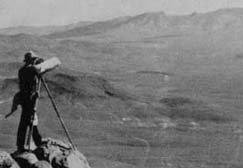|
History
Franklin Roosevelt delivered a speech in Portland during the 1932 presidential campaign. He promised that the next great federal
hydroelectric project would be built on the Columbia River to prevent extortion against the public by the giant electric utility holding companies
then dominant in the region.
 The U.S. Government built Bonneville and Grand Coulee Dams in the 1930s and 1940s. Power from these massive projects strengthened
the Northwest economy and brought electricity to rural areas that were not served by existing utilities.
The U.S. Government built Bonneville and Grand Coulee Dams in the 1930s and 1940s. Power from these massive projects strengthened
the Northwest economy and brought electricity to rural areas that were not served by existing utilities.
|
|
BPA Revenues Pay Costs
BPA pays its way by selling power, transmission and related services. BPA receives no tax revenues or appropriations. Your electricity bill,
not your taxes, pays BPA's costs. This financial responsibility ties BPA to the people it serves in the Northwest. BPA sells power at cost, providing
a benchmark that helps keep rates low to consumers. Low-cost Columbia River hydropower is a cornerstone of the Northwest economy. Today,
nearly 3 million people and more than 1.2 million jobs depend on BPA power.
|
|
|
BPA is Created
Congress created BPA in 1937 to deliver and sell the power from Bonneville Dam. The first line connected Bonneville Dam to Cascade
Locks, just three miles from the dam. Major construction from the 1940s through the 1960s created networks and loops of high-voltage
wire touching most parts of BPA's service territory. During that time, Congress authorized BPA to sell and deliver power from more federal
dams on the Columbia and its tributaries.
About 45 percent of the power consumed in the Pacific Northwest comes from BPA. Northwest utilities and a few large industries buy BPA
power; utilities resell it to homes, businesses, and other consumers.
BPA operates and owns one of the nation’s largest high voltage transmission systems.
BPA provides transmission to direct service industries and public and private utilities. This safe and reliable service provides low-cost
power to markets throughout the west.

|
|
 About BPA
About BPA
 History
History